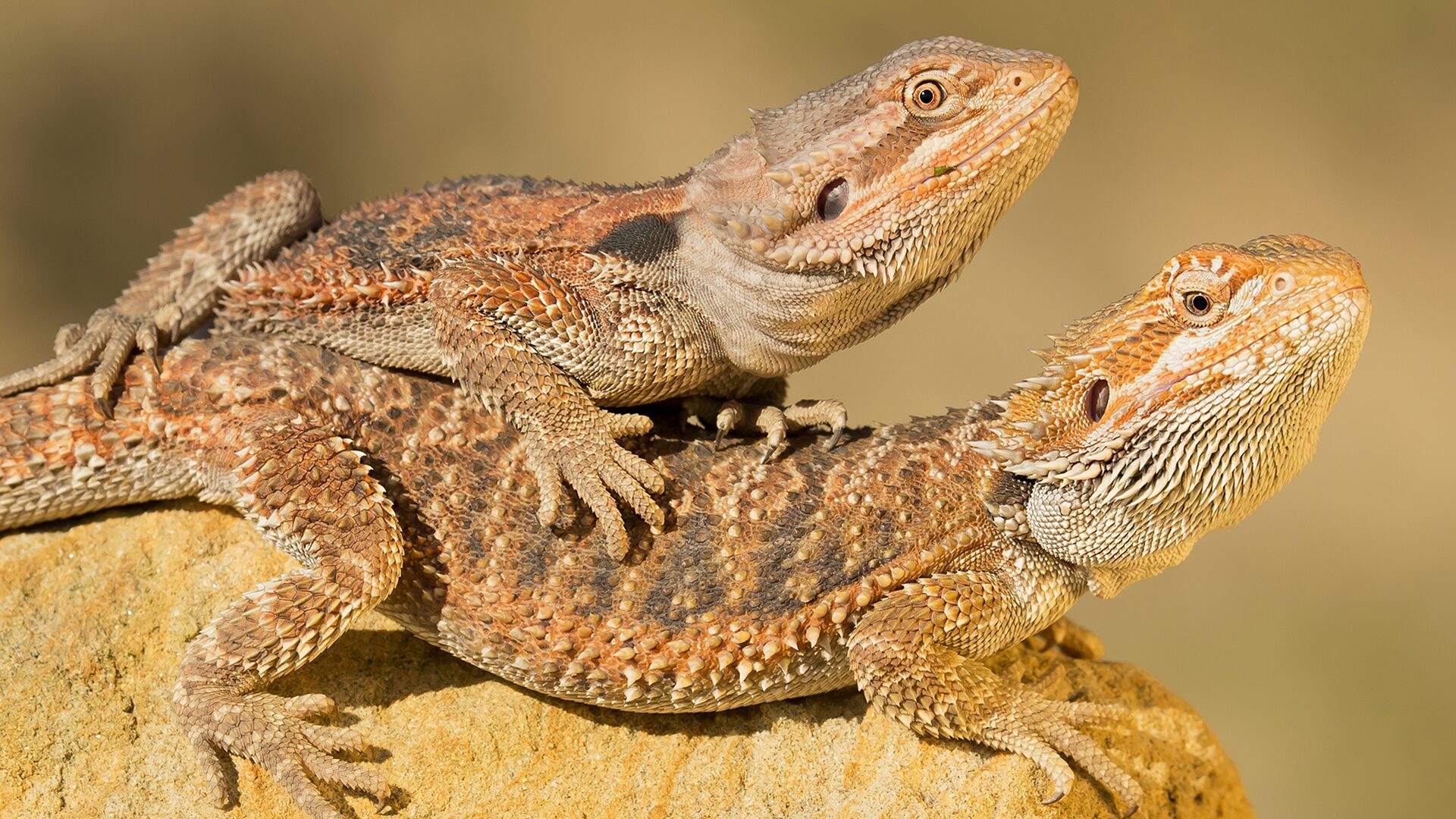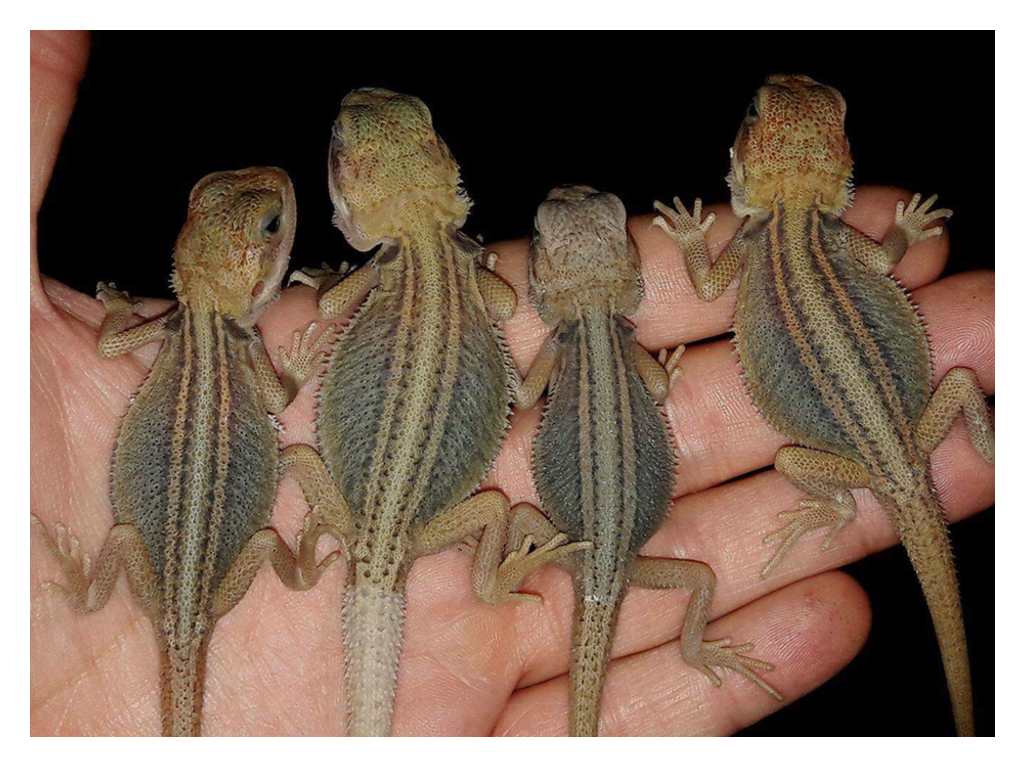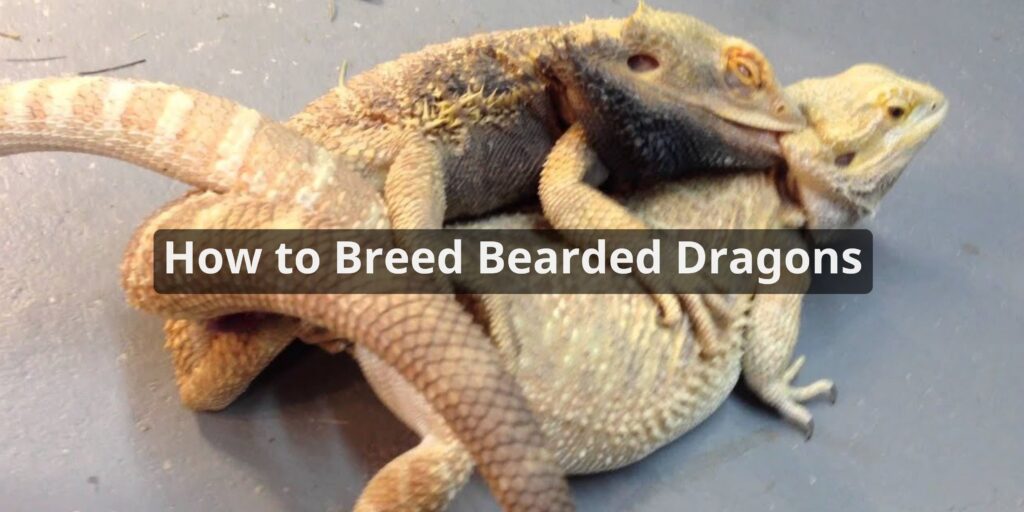Bearded dragons are a popular pet lizard known for their docile nature, manageable size, and interesting behaviors. For experienced owners looking to breed their bearded dragons, there are some important steps to follow to ensure a successful and healthy clutch. Here is a comprehensive guide on how to breed bearded dragons.
Breeding bearded dragons presents some unique challenges but can be very rewarding if done properly. Bearded dragons reach sexual maturity between 8-18 months old depending on factors like nutrition, environment, and genetics. It is recommended to wait until they are at least 18 months old before breeding as this allows them to reach full size and maturity first.
When housing adult bearded dragons for breeding, a tank size of at least 55-75 gallons per pair is recommended. Proper heating and UVB lighting is crucial, and the enclosure should include areas for basking, hiding, and egg-laying. Prior to breeding, the female should be well-fed with calcium-rich insects and vegetables to support egg production.
Brumation Period

To trigger breeding behavior, bearded dragons first need to go through a brumation period. This is similar to hibernation, but they do not sleep deeply or for as long. Brumation helps simulate the natural seasonal/climate changes a bearded dragon would experience in the wild.
To induce brumation, gradually reduce the temperature on the cool side of the tank down to 65-75°F over the course of 4-6 weeks. Reduce day length to only 8-10 hours and minimize handling/disturbance. Stop feeding insects and offer vegetables sparingly, 2-3 times a week.
After 6-8 weeks in brumation, temperatures and light cycles can slowly be returned to normal. Increase temperatures 3-5 degrees per day back up to the 80s or 90s on the warm side. Return to a 12-14 hour daylight schedule. Once fully out of brumation, feeding can resume normally.
Introducing the Pair
Once out of brumation for 2-3 weeks, the male and female can be introduced in the breeding tank. Watch them closely for signs of aggression or rejection. Some chasing and nipping may occur as they establish a hierarchy.
Bearded dragons do best in a monogamous pair bonded to each other. If aggression persists, try a different pair that gets along better. Never leave them unattended until you are certain they are compatible.
Mating and Egg Laying
Receptive females will display darker beard coloring during breeding. The male will bite the back of her neck and align their vents to copulate. She may lay eggs within 4-5 weeks after successful mating.
Provide a suitable nesting site in the tank at least 12 inches deep made of a 50/50 sand and soil mix. She will dig down to bury the eggs. Clutches can range from 8-40 eggs depending on the size and age of the female.
Do not disturb the female during nesting as this can stress her and cause health issues. Leave the eggs buried for 55-75 days until ready to hatch. Track the lay date to monitor when hatching will occur. The eggs can be carefully dug up once pipped.
Incubating the Eggs
For best results, bearded dragon eggs should be incubated in a separate, controlled incubator. Maintain a temperature of 82-86°F and humidity around 40%. Position the eggs carefully in incubation medium like perlite or vermiculite. They require air exchange so do not seal incubation containers.
Candle the eggs after 30 days to check for viability. Discard any eggs that appear collapsed, shriveled or show no veins. Healthy embryos will be visible moving within the egg. Continually monitor temperature and humidity in the incubator. Hatching typically occurs after 55-75 days.
Caring for Hatchlings

Once hatched, the tiny bearded dragons must be set up properly to thrive. House hatchlings together in a 20-40 gallon tank with appropriate heating and UVB lighting. Provide plenty of hiding spots and capture proof lids.
Feed hatchlings 3-5 times daily with finely chopped veggies and calcium dusted insects like pinhead crickets or Phoenix worms. They will grow quickly and shed often as juveniles. Maintain ideal housing conditions and monitor their health closely.
With meticulous care and breeding of quality parent stock, breeding bearded dragons can be a great herpetocultural experience. However, there are also many unwanted pet lizards in need of rescue. Consider adoption first before breeding your beardies.
Conclusion
Breeding bearded dragons requires experience caring for the species, properly conditioned adult breeders, a controlled brumation period, ideal setup, and careful incubation. Done correctly under the guidance of a reptile veterinarian, breeding beardies can be very interesting but also demands substantial time and dedication. Research thoroughly before attempting breeding to ensure the best outcomes for both parents and offspring.
FAQs About How to Breed Bearded Dragon
How do I introduce a male and female bearded dragon for breeding, and what signs indicate they are ready to mate?
Introduce them gradually, monitoring their behavior. Signs of readiness include the female displaying receptive behavior like head bobbing, arm waving, and a willingness to approach the male. If the female displays aggression, separate them immediately.
What should I know about the mating behavior and courtship rituals of bearded dragons?
Mating behavior involves the male bobbing his head, mounting the female, and biting her neck gently. Courtship can be intense, with both dragons displaying dominance and submission cues. Ensure they are closely supervised during this period.
How long does the breeding process typically take, and how can I tell if my female is gravid (carrying eggs)?
Breeding may take a few weeks, and the female will develop a swollen abdomen if she’s gravid. Monitor her weight gain, behavior changes, and physical appearance. Consult a vet if you suspect she is gravid for confirmation.
What are common issues or complications during bearded dragon breeding, and how can I address them?
Common issues include egg-binding in females and aggression between the dragons. Provide a nesting site for the female, and separate them if aggression escalates. Seek veterinary assistance if complications arise.
What should I feed and provide for pregnant and baby bearded dragons to ensure their health and growth?
Offer a calcium-rich diet for pregnant females and provide a varied diet for baby dragons, including appropriately sized insects and leafy greens. Ensure access to clean water and appropriate supplements.
When should I separate the male and female after breeding, and can I breed bearded dragons multiple times?
Separate them after breeding to prevent stress or potential harm. Bearded dragons can be bred multiple times in a year, but it’s essential to monitor their health and give them rest periods between breeding cycles.
How do I find suitable homes for bearded dragon hatchlings, and what should I consider when selling or giving them away?
Ensure potential owners have proper knowledge and resources to care for the hatchlings. Screen potential homes, provide care instructions, and consider offering ongoing support. Avoid selling or giving them away to unsuitable environments or inexperienced owners.



